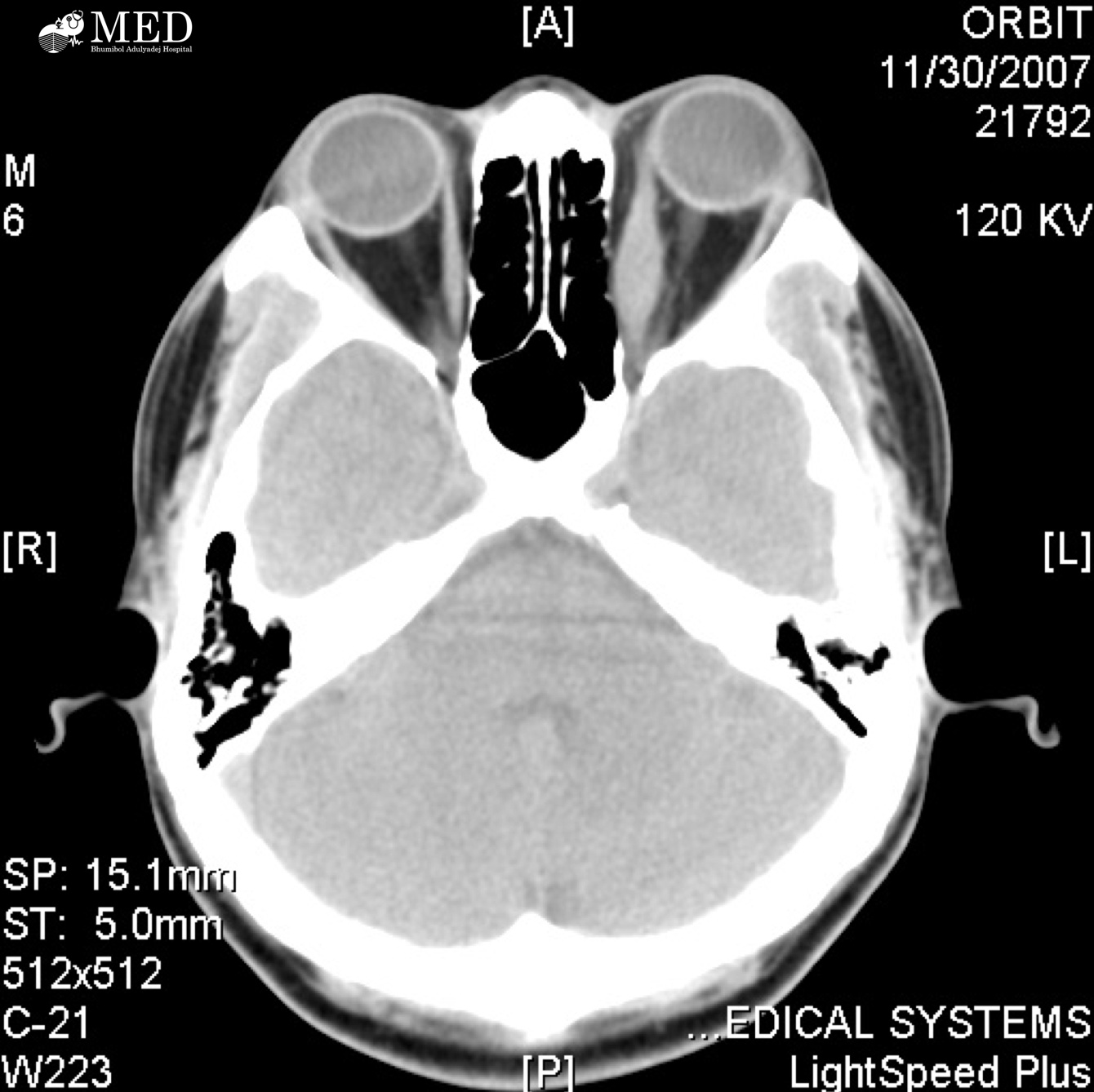BHUMIBOL ADULYADEJ HOSPITAL

A 42-year-old woman, known case inactive rheumatoid arthritis, presented with significant unintentional weight loss and palpitation for 6 months. She'd noticed that her eyes were slightly bulging with worsening dryness of the eyes.
Questions:
1. What is the differential diagnosis from the history above?
Graves' Disease (Hyperthyroidism with Thyroid Eye Disease): This autoimmune disorder is a leading consideration due to the patient's palpitations, unintentional weight loss, eye bulging (exophthalmos), and dryness of the eyes. Graves' disease often involves both hyperthyroidism and thyroid eye disease.
-if the patient has hyperthyroidism from causes other than Graves' disease, such as toxic multinodular goiter or toxic adenoma, and the eye symptoms are not directly related to the thyroid disease, there are other potential conditions to consider for the eye symptoms
-Having RA may increase the risk of having GD by 39% (OR 1.39, 95% CI 1.10-1.75, p = 0.007). Vice versa, having GD may increase the risk of RA by 30% (OR 1.30, 95% CI 0.94-1.80, p = 0.112).
Differential diagnosis:
1. Other Autoimmune Conditions: Given the patient's history of rheumatoid arthritis (an autoimmune disorder), other autoimmune conditions such as Sjögren's syndrome should be considered. Sjögren's syndrome can cause dryness of the eyes and mouth.
and less common diseases
2. Orbital Mass or Tumor: Various tumors or growths behind the eye, including benign or malignant tumors, could lead to eye bulging and discomfort. This might include conditions like optic nerve glioma or meningioma.
3. Cavernous Sinus Thrombosis: This serious condition involves a blood clot in the cavernous sinus, which can lead to eye symptoms including proptosis.
4. Carotid-Cavernous Fistula: An abnormal connection between arteries and veins in the cavernous sinus can result in proptosis and other eye-related symptoms.
5. Infiltrative Diseases (e.g., Lymphoma, Leukemia): Various infiltrative diseases, including lymphoma or leukemia, could affect the tissues behind the eyes, leading to proptosis and eye discomfort.
2. What are the proper next step investigations?
Thyroid hormones (FT4, TSH), Thyroid receptor Ab
MRI or CT Scan of the Brain and Orbits
In summary, the patient's thyroid function tests and thyroid autoantibodies are consistent with Graves' disease.
3. Please describe positive findings from the CT imaging of the orbits above and give diagnosis.
The CT scan of the patient reveals left unilateral eye bulging with noticeable enlargement of the medial extraocular muscles (EOMs). Specifically, the medial rectus muscle appears to be thicker than expected. This localized muscle enlargement is contributing to the protrusion of the left eye.
Reference:
Wu D, Xian W, Hong S, Liu B, Xiao H, Li Y. Graves' Disease and Rheumatoid Arthritis: A Bidirectional Mendelian Randomization Study. Front Endocrinol (Lausanne). 2021 Aug 17;12:702482.
#endo #neuro #rheumato
โดย ร.ต.ณัฐพล แก้วประเสริฐ อาจารย์แพทย์ประจำหน่วยต่อมไร้ท่อฯ และ
น.อ.หญิง สัญสณีย์ พงษ์ภักดี หัวหน้าหน่วยประสาทวิทยา
กองอายุรกรรม รพ.ภูมิพลอดุลยเดช พอ.